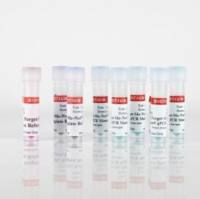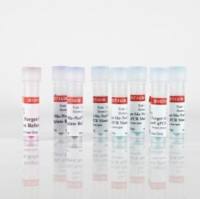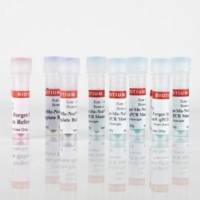Dideoxy Sequencing Reactions Using T7 Polymerase
互联网
705
The chain termination DNA sequencing procedure introduced by Sanger and coworkers in 1977 (1 ) meant a revolutionary achievement in fast, simple, and accurate deciphering of DNA fragments. Long stretches of this nucleic acid could from then on be sequenced within a relatively short time. The method makes use of the enzymatic elongation of specific oligodeoxyribonucleotide primers that are complementary to a specific sequence of the DNA template. Four different reaction mixes each contain all four conventional deoxyribonucleotide triphosphates (dNTPs) plus a small amount of one dideoxyribonucleotide triphosphate (ddNTP), an analog that leads to chain termination since the lacking 3'-hydroxyl group prevents formation of a phosphodiester bond with a succeeding nucleotide. The four assays each contain a different dideoxynucleotide triphosphate. The chain extension reaction thus competes with the infrequent but specific termination by a ddNTP. This leads to a mixture of DNA fragments of varying lengths that all possess the same 5'-end owing to the common primer. Since one of the dNTPs contains a radioactive isotope (either 32 P or 35 S) these fragments become radioactively labeled and can be detected by autoradiography after separation by gel electrophoresis. The corresponding sequence is derived from the band pattern of the four different reaction mixtures. Single-stranded phage and denatured double-stranded plasmid DNA can serve as a template, thus opening the possibility to use a large variety of vectors for cloning. Primers that are complementary to various regions of the multicloning sites of these vectors are commercially available from a number of molecular biological companies or can easily be synthesized in the lab (compare Chapter 11 ).









